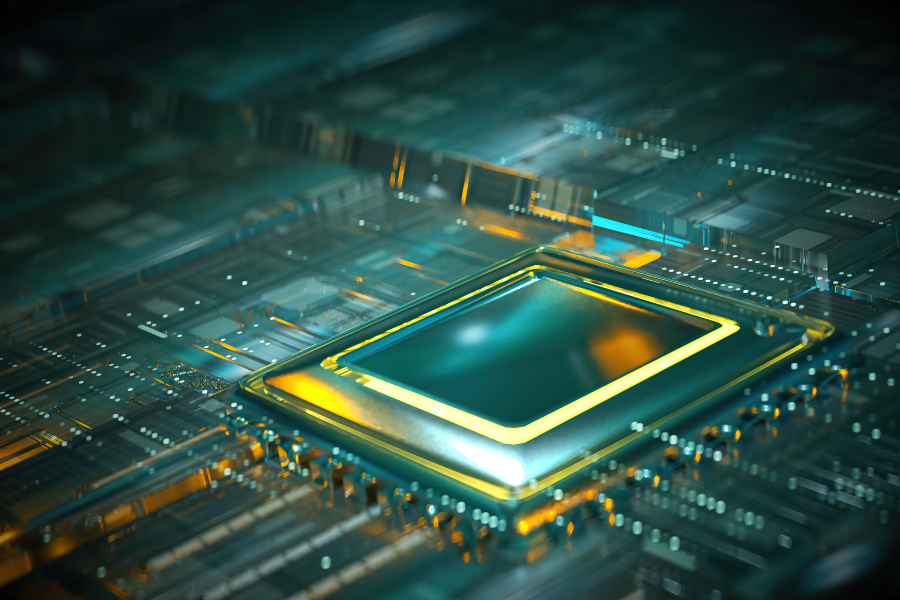
Key Considerations in PCB Design for Embedded Hardware
Printed Circuit Boards (PCBs) are at the heart of embedded hardware, providing the necessary electrical pathways for components to communicate. As embedded systems evolve, PCB designs become more intricate and optimized for performance, efficiency, and reliability. However, designing PCBs for embedded hardware involves several critical considerations that can make or break the functionality of the system. In this blog, we’ll discuss key factors and best practices that engineers should keep in mind when designing PCBs for embedded applications.
1. Component Placement and Orientation
Proper component placement is one of the most critical steps in PCB design. A well-organized layout improves signal integrity, minimizes noise, and ensures heat dissipation. Here’s why it matters:
-
- Signal Integrity: Components handling high-frequency signals, such as processors and communication modules, should be placed as close to each other as possible to avoid signal loss and minimize delays. If not, the length of the traces may introduce unwanted interference and timing issues.
- Proximity of Power Components: Power regulation components such as capacitors and voltage regulators should be placed near the components they serve. This is essential for maintaining stable power levels and avoiding noise in the power supply lines.
- Clear Separation of Analogue and Digital Sections: For mixed-signal designs, it’s crucial to separate analogue and digital components to minimize interference. Digital signals tend to generate noise that can interfere with sensitive analogue circuitry.
- Best Practice: Use placement grids and follow a logical flow from inputs to outputs. Simulate component placement before actual design to evaluate heat dissipation and signal performance.

2. Power Distribution and Grounding
Efficient power delivery is fundamental to embedded systems, especially those running sensitive or high-speed components. Improper power distribution can lead to performance degradation or even system failure.
-
- Power Planes: Utilizing a dedicated power plane layer in a multi-layer PCB provides a stable supply of power and reduces impedance. The power plane also acts as a heat sink, helping in thermal management.
- Decoupling Capacitors: Ensure that decoupling capacitors are placed close to power pins of ICs to stabilize voltage supply and filter out noise. Proper placement is crucial for maintaining signal integrity and ensuring the smooth operation of microcontrollers and other ICs.
- Grounding Strategy: A solid ground plane is essential to reduce electromagnetic interference (EMI) and provide a reference for all signal and power planes. In multi-layer PCBs, ensure that the ground plane is continuous and not fragmented. This helps in improving signal quality and reducing noise.
- Best Practice: For mixed-signal designs, it may be necessary to create separate analogue and digital ground planes to prevent interference between high-speed digital signals and sensitive analogue circuits.
3. Signal Integrity and Trace Routing
The PCB layout directly impacts the signal integrity of the embedded system. Poor routing can introduce noise, signal loss, and other issues that affect overall system performance. Some key aspects to consider include:
-
- Trace Length and Width: The length of a signal trace impacts both propagation delay and signal degradation. High-frequency signals require shorter traces to prevent issues like timing errors or electromagnetic radiation. Additionally, the trace width should be calculated based on the current carrying capacity to prevent overheating and ensure proper signal transmission.
- Differential Pair Routing: High-speed signals, such as those in USB, Ethernet, or LVDS interfaces, often require differential pairs to be routed together with controlled impedance. This means keeping the traces of each pair the same length and close to each other to prevent noise and timing mismatches.
- Impedance Matching: For signals that travel over long distances or are sensitive to distortion, impedance matching is critical. Controlled impedance traces ensure that signal reflection is minimized, maintaining signal quality across the board.
- Best Practice: Use via stitching and guard traces to isolate high-speed signals and minimize noise interference. Proper simulation tools can help verify signal integrity before production.

4. Thermal Management
With the increasing demand for smaller, more powerful embedded systems, thermal management has become a critical design challenge. Components such as microcontrollers, processors, and power management ICs generate significant heat, which must be dissipated effectively to avoid system failures.
-
- Heat Sinks and Thermal Pads: For high-power components, adding heat sinks or thermal pads can help dissipate heat efficiently. Components generating heat should have adequate clearance and be placed where airflow is possible, if relevant.
- Thermal Vias: These are small vias that connect different layers of the PCB and are designed to transfer heat away from heat-generating components. They are particularly useful in multi-layer PCBs where heat needs to be distributed evenly across layers.
- Copper Pours: Copper pours or planes can be used to spread heat across the PCB. The thickness of the copper layer also plays a significant role in dissipating heat, especially in power supply sections.
- Best Practice: Perform thermal simulations to predict heat flow and identify potential hotspots in the PCB. Ensuring proper ventilation in the final product housing also helps to manage long-term heat buildup.
5. Layer Stack-Up
Layer stack-up refers to the arrangement of conductive and insulating layers in a multi-layer PCB. It plays a significant role in signal integrity, thermal management, and manufacturability.
-
- Multilayer PCBs: For complex embedded systems, multilayer PCBs are often required. They provide more routing flexibility and allow designers to isolate power and ground planes for better noise reduction. However, the layer count must be balanced for cost and manufacturability.
- Symmetrical Stack-Up: Maintaining symmetry in the layer stack helps prevent warping during the manufacturing process. A well-balanced stack-up also improves mechanical strength and ensures reliable performance under stress.
- Signal and Power Layer Placement: Keep power and ground planes close together to reduce electromagnetic radiation. Critical signals should be routed in internal layers between the ground and power planes for shielding and noise reduction.
- Best Practice: Plan the layer stack-up based on the complexity of the embedded hardware. Ensure proper allocation of ground and power layers while maintaining balanced layers for structural integrity.
6. Design for Manufacturability (DFM) and Assembly (DFA)
As you design the PCB for an embedded system, it’s important to keep in mind the manufacturing and assembly process. Ignoring manufacturability can result in delays, increased costs, and even redesigns.
-
- Component Availability: Always consider component availability during the design phase. Some components may be difficult to source or have long lead times, which can delay production.
- Clearances and Tolerances: Ensure that the PCB layout adheres to the manufacturer’s tolerances for trace widths, hole sizes, and spacing. If the design is too intricate, it may be difficult to manufacture or prone to defects.
- Testability: Add test points and debugging interfaces to the PCB to facilitate testing after manufacturing. This is particularly important for embedded systems that need in-system programming or troubleshooting during development.
- Best Practice: Work closely with the manufacturer to ensure that the design can be produced efficiently and cost-effectively. Early involvement of the manufacturing team can help identify potential issues before the design is finalized.

7. EMI/EMC Compliance
Electromagnetic interference (EMI) and electromagnetic compatibility (EMC) are crucial for ensuring that your embedded system performs reliably in various environments without causing interference with other devices.
-
- Shielding: Sensitive components may require shielding to protect them from external electromagnetic fields. This can be achieved using metal enclosures, PCB-level shielding, or ground planes.
- Filters and Ferrite Beads: Power lines and signal lines can be filtered using capacitors, inductors, or ferrite beads to prevent high-frequency noise from entering or leaving the PCB. This is particularly important for embedded systems in automotive, industrial, or medical environments, where EMI can affect system performance.
- Best Practice: Design the PCB to meet regulatory standards for EMI/EMC compliance, such as FCC or CE certification. Perform pre-compliance testing to identify potential issues before going into production.
PCB design is a critical aspect of embedded hardware development, affecting performance, reliability, and manufacturability. By considering key factors such as component placement, signal integrity, power distribution, thermal management, and compliance, engineers can create robust PCBs that meet the demands of modern embedded systems. With careful planning, simulations, and collaboration with manufacturers, it is possible to design efficient and scalable PCBs that are ready for production.













